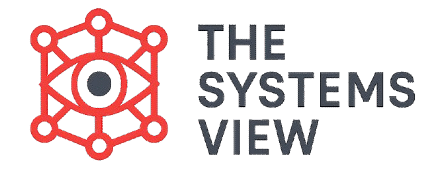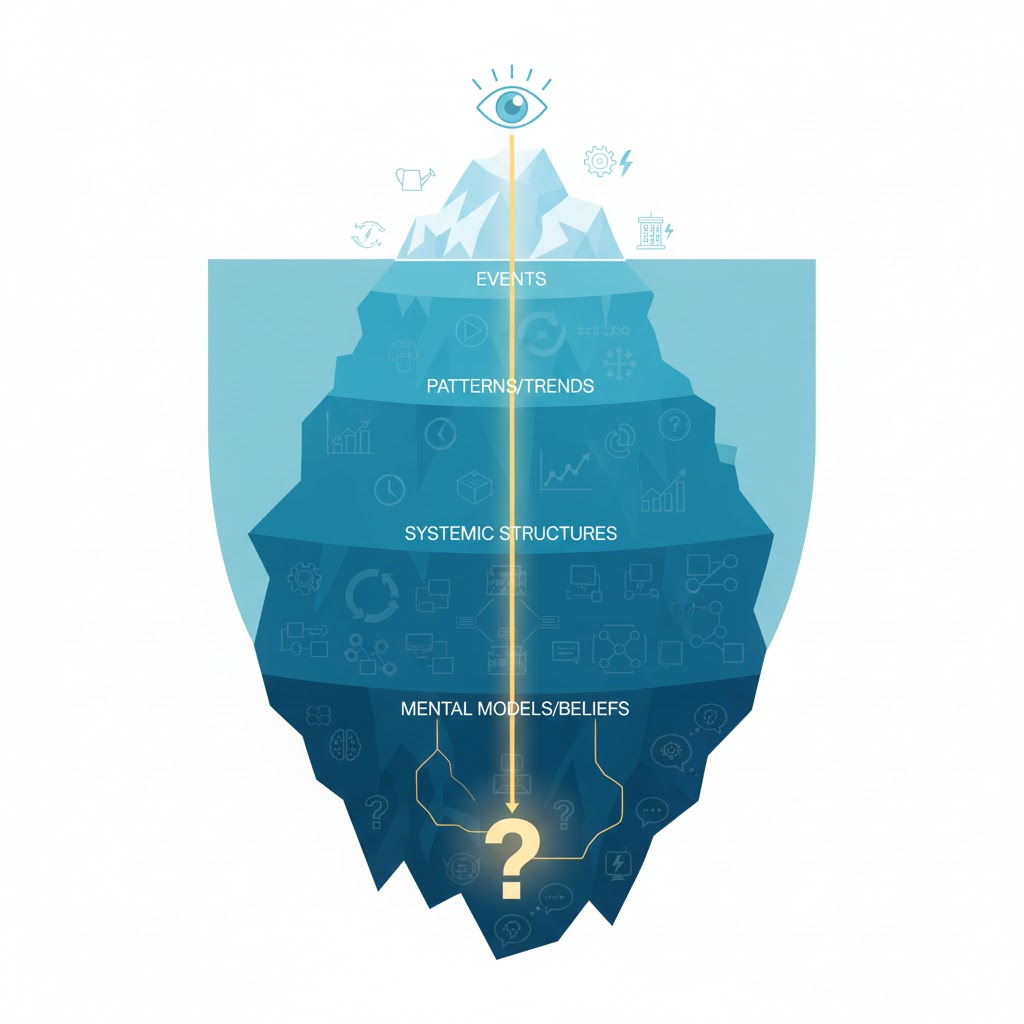When the Titanic hit an iceberg, the crew only saw the tiny white tip sticking out of the water. They didn’t see the massive, dangerous mountain of ice hiding beneath the surface. Complex problems are exactly the same.
The Iceberg Model is one of the most helpful tools in System Dynamics and systems thinking. It is a visual metaphor that helps us understand that the events we see—the daily news, the sudden crisis, or the singular mistake—are just the “tip of the iceberg.” To truly solve a problem, we have to look below the water line. We have to dive down to understand the patterns, the structures, and the mental models that are actually causing the events.
Level 1: The Event Level (What Just Happened?)
The top of the iceberg—the roughly 10% that is visible above the water—represents Events.
This is the level where most people live their daily lives. It is the level of the “here and now.” An event is a single occurrence.
- Example: “I caught a bad cold today.”
- Example: “The car broke down this morning.”
- Example: “Profit dropped by 5% this quarter.”
The Action: Reacting When we only look at the Event level, our only option is to react. We treat the symptom. If you catch a cold, you take medicine. If the car breaks, you call a tow truck. While reacting is necessary for survival, it never fixes the root cause. If you only react, you will likely face the same problem again and again.
Level 2: Patterns and Trends (What Has Been Happening?)
Just below the surface, we find the Patterns and Trends. This is where we link a series of events together over time.
Instead of looking at one isolated incident, we look back to see if this has happened before.
- Example: “I notice I’ve caught a cold three times in the last two months.”
- Example: “The car has broken down four times since winter started.”
The Action: Anticipating When we see the pattern, we can start to anticipate what might happen next. If you see a pattern of profits dropping every December, you can plan for it. However, you still haven’t figured out why it is happening; you just know that it is happening.
Level 3: System Structure (Why Is It Happening?)
Now we dive deep underwater. This is the level of System Structure. In System Dynamics, this is the most critical level. This is where we find the feedback loops, stocks, flows, and policies that act as the engine driving the patterns.
This level asks: What are the relationships between the parts?
- Example: “Why am I getting sick? Well, my work stress leads to lack of sleep (a reinforcing loop), which weakens my immune system (a stock), which makes me susceptible to viruses.”
- Example: “The car breaks down because the maintenance policy says we only change the oil every 20,000 miles, which is too long for this weather.”
The Action: Designing When you understand the structure, you can design a solution. You can change the feedback loop. You might decide to change your work schedule to get more sleep (breaking the stress loop) or change the car’s maintenance policy. This is where real, lasting change happens.
Level 4: Mental Models (Where Does the Structure Come From?)
At the very bottom of the iceberg, anchoring everything, are Mental Models. These are the deeply held beliefs, assumptions, and values that hold the system structure in place.
The structure didn’t appear by magic; someone designed it based on what they believed to be true.
- Example: “Why do I work so hard that I don’t sleep? Because I believe that ‘Successful people must work 80 hours a week.'”
- Example: “Why is the maintenance policy so cheap? Because the company values short-term cost savings over long-term reliability.”
The Action: Transforming To permanently fix a system, you often have to transform the thinking that created it. If you don’t change the belief that “success equals overwork,” you will eventually drift back into the same stressful structure, no matter how many vacations you plan.
The Iceberg Model teaches us that “Events” are just the visible result of deeper forces. While we must react to events, true systems thinkers focus on the Structure (the relationships and policies) and the Mental Models (the beliefs) to create lasting change.
Conclusion
The Iceberg Model helps us move from being reactive to being proactive. Most of the world is distracted by the “noise” of events at the top. System Dynamics encourages us to look deeper. By identifying the patterns over time, mapping the system structure of feedback loops, and challenging our mental models, we can stop patching up symptoms and start solving problems at their root.

